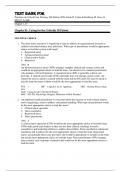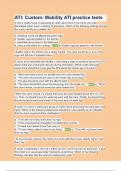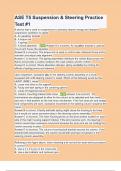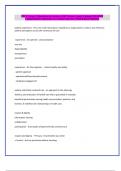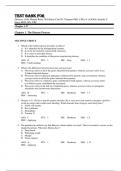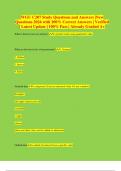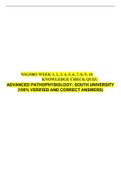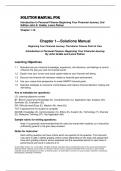Exam (elaborations)
Test Bank For Priorities in Critical Care Nursing 9th Edition by 2024 Linda D. Urden & Kathleen M. Stacy & Mary E. Lough Chapter 1-27
Test Bank For Priorities in Critical Care Nursing, 9th Edition by 2024 Linda D. Urden & Kathleen M. Stacy & Mary E. Lough Chapter 1-27
[Show more]
